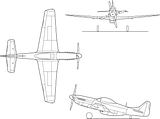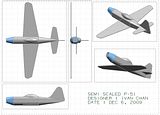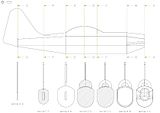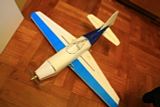
The plan was to build a flying machine that could carry heavy filming or photography equipment to high altitude and on long duration flight, just like a spy plane. It must also be capable to take off in a short distance either on solid ground, ice, or water.
Eventually I’ve chosen one of my half retired RC plane, the GWS SlowStick, for converting into such a flying machine. This aircraft features a dihedral wing with a spectacular under-chamfered air foil, which gives it the right criteria to be modified into a steady heavy lifting platform. I took away the stock motor and replaced it with a brushless motor. I've also used a 3-cell 11.1v Li-po battery for the power system. Finally I replaced the landing gears with removable floats so that I could takeoff and land on ice or water, or switch it back into ground landing mode easily.

Test flying shows exceptionally good handling performance. My modifications worked well. I’m very glad with that and soon I started to hang different cameras and video recorders onto this aircraft.
During the entire project, it has successfully carried three different cameras on multiple missions. The aircraft has been flown in snow, land on river and ice, and also flew in the summer season on relatively calm weather. Lots of amazing video footages and photos had been taken in these flights. I am sure you will enjoy the youtube videos and still pictures as much as I do!





















